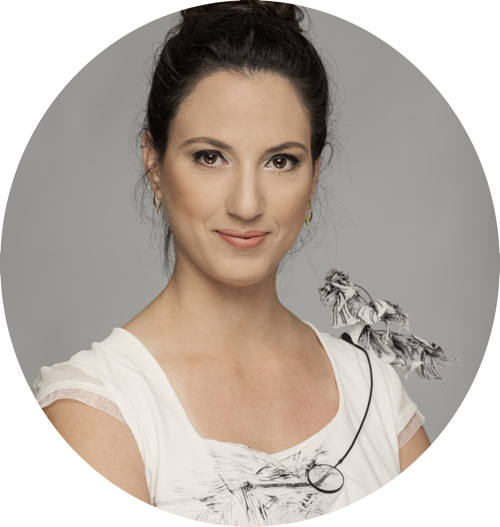Why Burberry insists on being Sustainable? | Sustainable Luxury Series
Burberry group is Britain's largest luxury label headquartered in London, England. The brand is well known for its heritage and iconic trench coats, with its signature plaid that’s probably the most iconic in the world. Burberry’s current strategy highlights their goals for 2022, which include taking steps to protect the planet and make sure those in their supply chain and communities surrounding it experience a positive impact from working with the company.
Burberry was established in 1856 by Thomas Burberry, and it originally focused on the development of outdoor attire. The fashion house has moved into the high fashion market, developing a first of its kind fabric called Gabardine, which is completely breathable and waterproof and exclusively made for the brand. Burberry’s first shop opened in London in 1891, and it was an independent family-controlled company until 1955 when it was reincorporated. Today Burberry has stores in 51 countries around the world. The company is listed on the London Stock Exchange, and in 2015, Burberry ranked 73rd in Interbrand's Best Global Brands report alongside Louis Vuitton and Prada.
In recent years, Burberry has been associated with a few sustainable scandals. The paramount of them all was revealed in its annual report in July 2018, that the brand had burned 28.6 million pounds, or about $37 million, of clothing and cosmetics. This announcement prompted fierce criticism; the brand mentioned the practice was justified as an effort to maintain its "brand value". The criticism was focused around the fact that Burberry shows no respect for its own products, their material value, or the hard and intensive work and natural resources that have been put into making them.
This practice is still widespread across the retail and consumer industry. It’s often used as a safeguard to prevent unwanted items from being stolen or sold at a significant discount, which could potentially erode the high-end price tags they can command in stores. Since this big scandal exploded, it seems Burberry may have learned something about their sustainability plans - that their actions need to go hand in hand and that they need to take further steps in their sustainable journey.
Burberry has had social and environmental programs in place for over a decade. They first committed to sustainability as their core mission in 2004, and went on to issue a five-year Responsibility Agenda in 2017, which was designed to drive positive change and build a more sustainable future. Burberry also staged its first-ever carbon neutral show for Fall/Winter 2020 at London Fashion Week. Burberry’s current strategy highlights their goals for 2022, which include taking steps to protect the planet and make sure those in their supply chain and communities surrounding it experience a positive impact from working with the company. The three main areas the company focuses on are the product level, the company level, and the community level.
When talking about the product level, Burberry’s goals are focused on pioneering creative research around new innovative materials and pushing forward the demand for sustainable raw materials, while advancing the wellbeing and livelihoods of those in their supply chain. Burberry shared that over the last year, 89% of their products had at least one positive element and 67% of them had more than one. By 2022, they aim to have 100% of their products with more than one positive element. With positive elements, the company implies social and/or environmental improvements, from the raw material stage to the product manufacturing process.
During the last year, 75% of all garments made with cotton as the product's main material were made more sustainably. Burberry works with partners like the Better Cotton Initiative and Textile Exchange while examining options like organic and regenerative cotton. By 2022 their goal is to procure 100% of their cotton more sustainably. The company also mentioned that in the last year, 64% of their leather was sourced from suppliers with sustainable certifications, and by 2022 they want 100% of their leather to be sourced from certified sustainable suppliers. They weren’t, however, clear on which certifications and what it means to use sustainably sourced leather.
At the company level, and probably also as a result of them burning over $30 million dollars worth of garments in 2018, Burberry hasn’t destroyed unsaleable finished products. The company has sent zero of its waste to landfills in its UK and Italy operations and manufacturing facilities. They have already integrated some reuse, repair, donate or recycle strategies of unsaleable products, and their aim is to expand these actions further.
In the 2019-2020 season, the company achieved 90% renewable electricity across their global footprint, and in the next two years, their aim is to reach 100% renewable electricity. This goal is part of a bigger plan to achieve a zero carbon footprint in their operations. The total reduction in energy use is down and will continue by reducing absolute emissions, improving energy efficiency, and switching to renewable energy resources. All of these steps before even talking about offsetting any remaining emissions. The renewable energy transition is done through close collaboration with the procurement and retail teams and engagement with landlords. It is not clear whether this goal also refers to subcontractors of the brand, manufacturing the products, or is this goal relevant only for tier 1 of the brand.
By 2022, Burberry aims to have a positive impact on 1 million people around the world. Until the 2019-2020 season, the program as a whole positively impacted over 400,00 people and over 290,000 of them just in the last year. This year, over 180,00 people were positively impacted in the US and UK, over 50,000 in Italy, and 40,000 in Afghanistan. Achieving a positive impact on people is really great, but it is not clear what specific positive impacts or actions the company is creating, how they’re measured, why the locations are chosen, or if there is any continuity to the positively impacted people from the previous years.
Besides Burberry’s sustainable aims and plans, it is a member of a few initiatives and organizations such as The Fashion Pact, a worldwide alliance organized by the French president Emmanuel Macron, who appointed François-Henri Pinault the CEO of Kering to unite leading fashion companies to tackle climate change. In the alliance, there are now over 150 companies from around the world that together are responsible for 30% of the fashion products worldwide.All the companies that are part of the pact develop a collaborative plan to address climate change and actions specified in the fashion sector.
Burberry is also a partner in the Ellen MacArthur Foundation’s initiative to make fashion circular. The aim of this initiative is to completely shift the industry from a linear model to a circular one, where products and materials are in an endless, purposeful material flow, completely avoiding the current situation where only 1% of textiles are recycled worldwide. The initiative is based on collaboration between fashion and textile companies and the Ellen MacArthur Foundation that their first of most important goals and mission is to shift our entire economy into a circular one.
Besides these two partnerships, Burberry is taking action with different organizations around the topics of living wages and plastic waste, also partnering with Canopy, a NGO that works to protect the world’s forests, species, and climate. The brand is also included in a sustainable metric, evaluating companies based on their economic, environmental, and social performances. Burberry is a founding signatory in The Global Climate Action formed by the UN and is a member of RE100, a project for businesses committed to 100% renewable energy. All of these initiatives are just a part of a few other projects Burberry is a member of, and a few other awards the brand has won for their sustainable performance.
Up until this point in the series of luxury brands and their sustainable strategies, agendas, and plans, no company mentioned if they relate or work according to the UN 17 Sustainable Development Goals (SDG), but Burberry does refer to each SDG in their own sustainable strategy level. When talking about the brand's product level, the chosen SDGs are SDG 6, clean water and sanitation, highlighting the dependency of textile production and the fashion industry as a whole on water and the water pollution that’s associated with these production methods. SDG 8 is focused on decent work and economic growth. In a global industry like the fashion industry, there are people all around the world who depend on these kinds of jobs, and they deserve a respectful work environment.
SDG 9 is about the industry, innovation, and infrastructure highlighting the importance of pioneering in creative research and inventions with tackling current sustainable challenges. SDG 12 is an obvious one in the product level context, responsible consumption and production, focusing on the importance of all fashion stakeholders from production up to the consumer's level to think about how fashion items are being taken care of and shifting the negative fashion impacts on our planet to positive ones. SDG 13 is about climate action and the steps the fashion industry needs to take to reduce its emissions and impact on the climate. SDG 15 is focused on life on land; the fashion industry is extremely dependent on crops and animals living on land, and should have a great interest in preserving all life on land. Last but not least on the product level strategy is SDG 17, partnerships for the goals, understanding that all of the current sustainability challenges can not be solved alone and that every company must work together with other organizations and businesses to find solutions to today's obstacles.
On the company level strategy, SDG 7 focused on affordable and clean energy is the main one, especially after understanding that Burberry is already on the journey to transform its operations to become carbon-free and base its energy mix only on renewable energy sources. Again SDG 12, responsible consumption and production, is relevant for the same reasons on the company level and the same goes to SDG 13 highlighting climate action and SDG 17 focused on partnerships for the goals.
The sustainable development goals Burberry’s chosen for the community level are SDG 1, no poverty, which is probably related to the company's subcontractors and offering garment and textile workers in developing countries the means to live decent lives with all the basic needs. SDG 4, quality education, is also relevant to developing countries Burberry has subcontracting contracts in, and by supporting these communities with better education, future generations could have better lives.
SDG 5 is focused on gender equality. Since many garment and textile workers are women, they experience discrimination just because they are female. The same goes for SDG 10, highlighting reduced inequalities from all kinds and forms. SDG 8 is again mentioned at the products strategy level, offering decent work and economic growth, and as a final part of the strategy, SDG 17 is mentioned again, partnerships for all goals. It seems like Burberry understands the power of collaboration that’s needed to face today's sustainable challenges, and this might be why SDG 17 is relevant to all company's sustainability strategy at any level.
This past April during the hardcore quarantine, Burberry launched their ‘ReBurberry Edit,’ which is comprised of 26 styles from its Spring 2020 collection that are crafted from sustainable materials. It includes a selection of trench coats, parkas, capes, accessories, and eyewear created from recycled materials, fabric scraps, industrial plastics, and organic content. The edit also features pistachio-colored sustainability labels that list the ‘positive attributes’ of the products, such as the amount of organic content or recycled natural fibers used, delivery against carbon emissions standards at production facilities, and social initiatives such as fair compensation of workers. Hopefully, this can expand to all the brand's products regularly.
- Image Headline: © Samuel Regan-Asante via Unsplash

Danielle Keller Aviram is a sustainable jewelry and fashion researcher, consultant and designer. She graduated an M.A focusing on sustainability in fashion at AMD Berlin after doing her B.A in jewelry and accessories design in "Shenkar" Tel Aviv. After her B.A she had her own international fine jewelry brand operating for 5 years.




